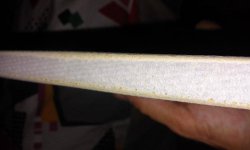Daub Marley
Member
Fair enough. You have much more experience with the technique than I do, so I trust your word. When I tried it I noticed that the material got beat up to the point where all the heads and contaminate are roughly the same size and shape. At that point they became impossible for me to separate. I guess I need to try out some different stuff and see how it goes, but I would think it would be easier to just start with material that's been cleaned through other means first.sorry Daub i didn't mean to be hostile and i appreciate your input .. but i do think your wrong in saying that you need clean starting material and that that parchment can't get it fully clean.. i have done it plenty of times with super dirty starting material and ended with extremely pure finished product.



